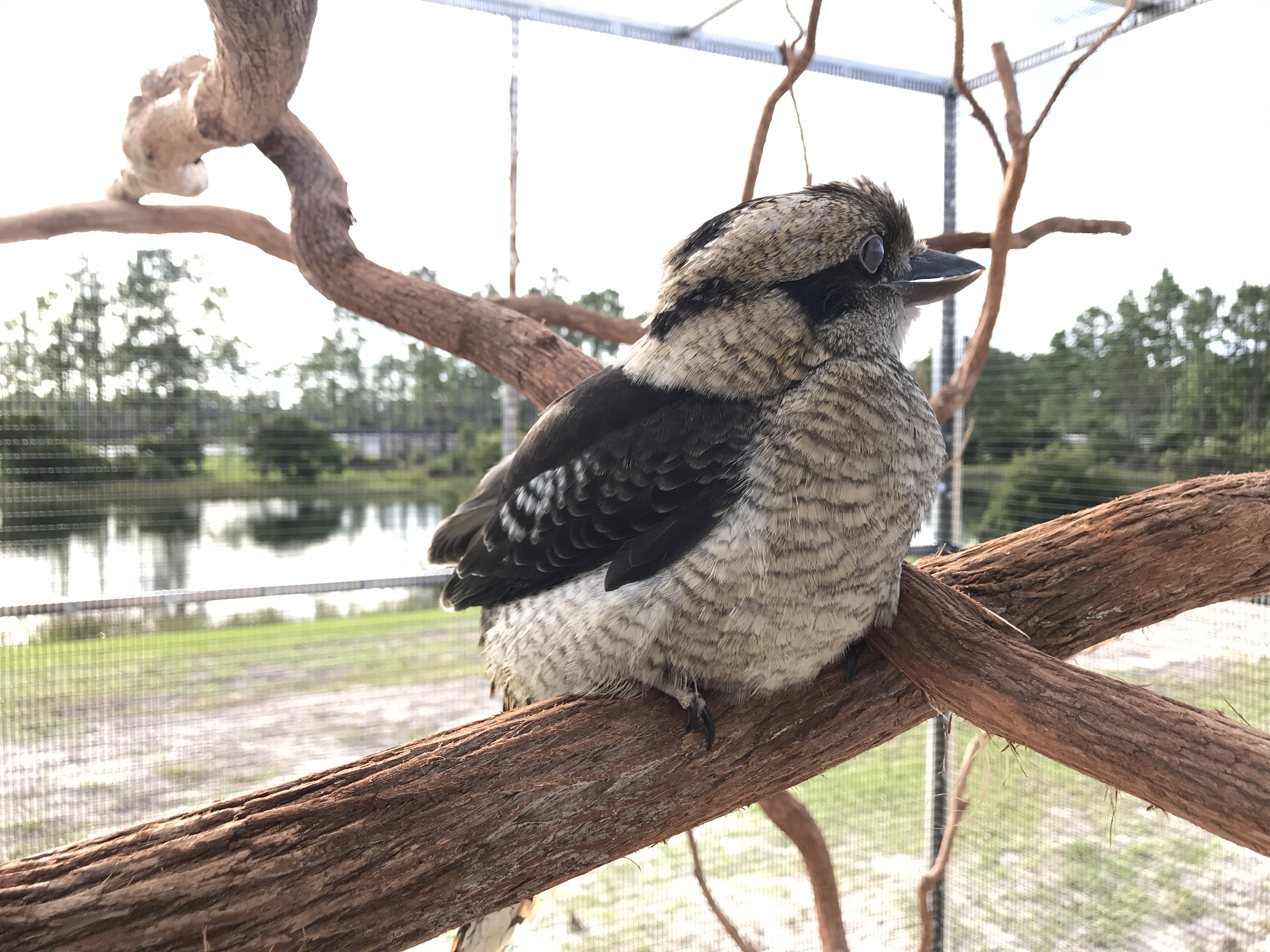The Laughing Kookaburra is one of four species of kookaburra; the other three are the blue-winged kookaburra, the spangled kookaburra, and the rufous-bellied kookaburra.
Laughing Kookaburras are native to Australia. Other Australian natives that reside at Weisberg Stables include the Kangaroo, Wallaby and Emu.

The laughing kookaburra is a well known symbol of Australia’s birdlife. Known as the “bushman’s alarm clock” because it has a very loud call, a laughing kookaburra vocalizes in its family group at dawn and dusk. The call sounds like a variety of trills, chortles, belly laughs, and hoots. It starts and ends with a low chuckle and has a shrieking “laugh” in the middle. The song is a way the birds advertise their territory.
Laughing kookaburras are the largest member of the kingfisher family. Members of the kingfisher family are found all over the world and are some of the only bird species known to be able to hover.
Laughing Kookaburras can live 11 years in the wild and 15 years in captivity.
Height: 15.4 to 17.5 inches
Weight: 6.9 to 16.4 ounces ; females slightly heavier than males
Laughing Kookaburra are monogamous territorial birds. Their eggs have an incubation period of 24-29 days. Two to three eggs are laid by the dominant female with additional eggs (up to 5) laid by ‘helpers’.
Both sexes share the incubation duties and both care for the young. Other Laughing Kookaburras, usually offspring of the previous one to two years, act as ‘helpers’ during the breeding season. Every bird in the group shares all parenting duties.
Laughing kookaburras seem to be able to determine the sex of their offspring: usually, the first egg to be laid in a clutch will be a male and the second egg a female.
Even though they are kingfishers, laughing kookaburras eat more insects, reptiles, frogs, and rodents than fish. They are famous for eating snakes, killing a snake up to 3 feet (1 meter) long by grabbing it behind the head and smacking it on the ground. Snakes are sometimes dropped from midair onto the ground for tenderizing! The parent birds often give small snakes to their chicks so they can learn how to kill prey.
In captivity Kookaburras are fed beef hearts, mealworms, crickets and mice.